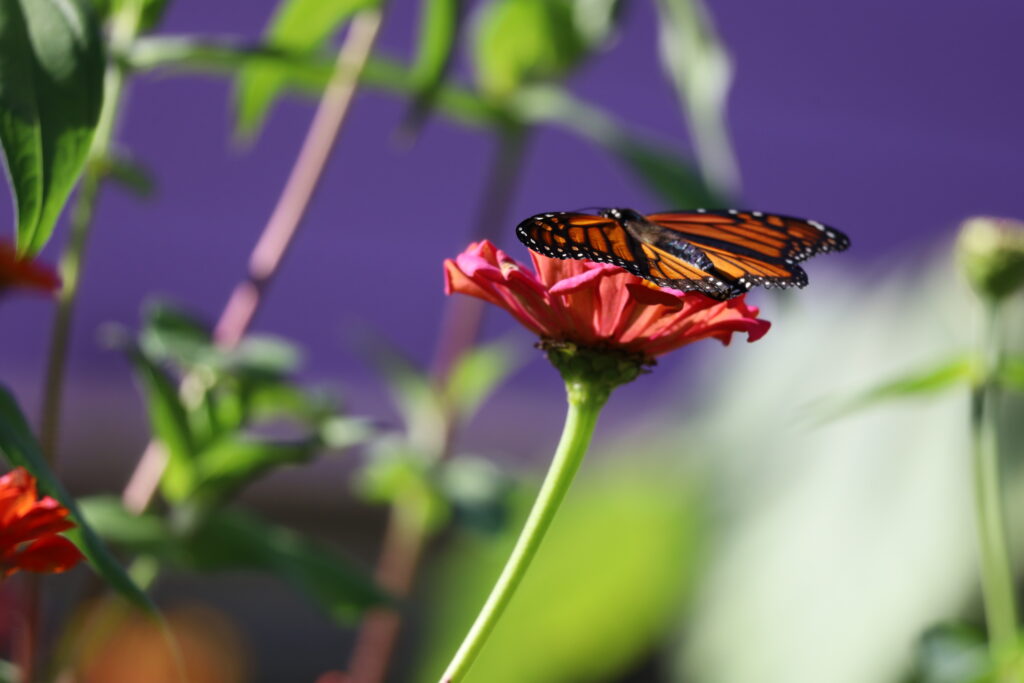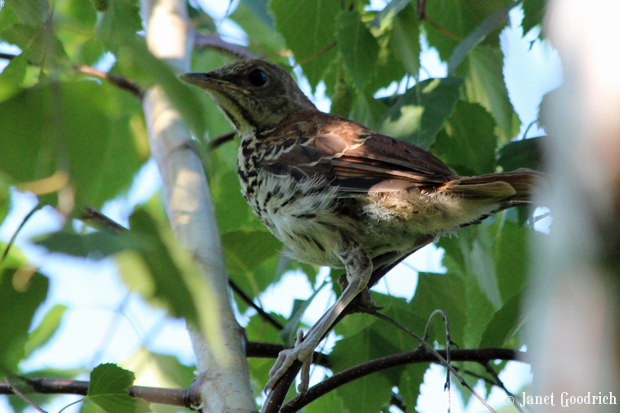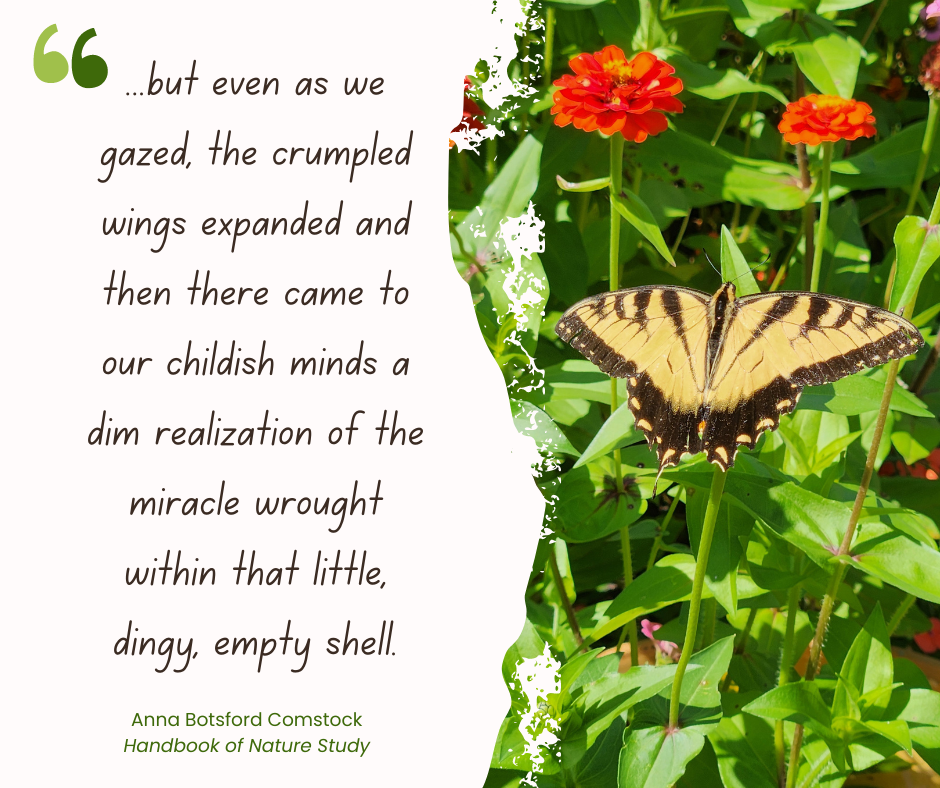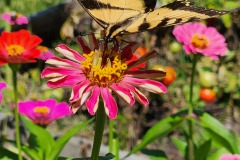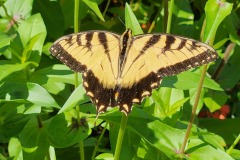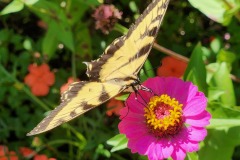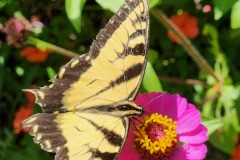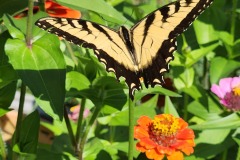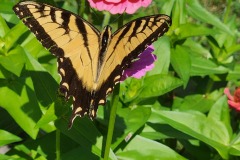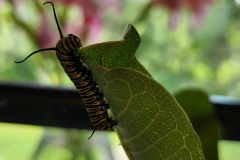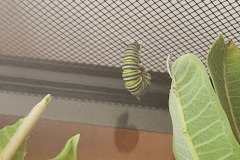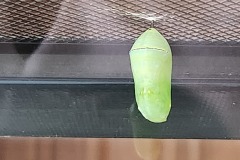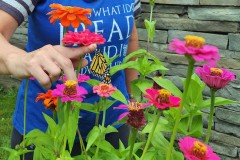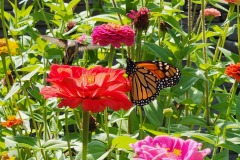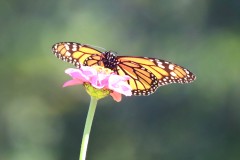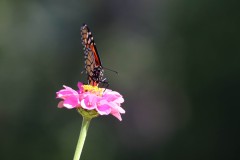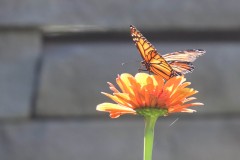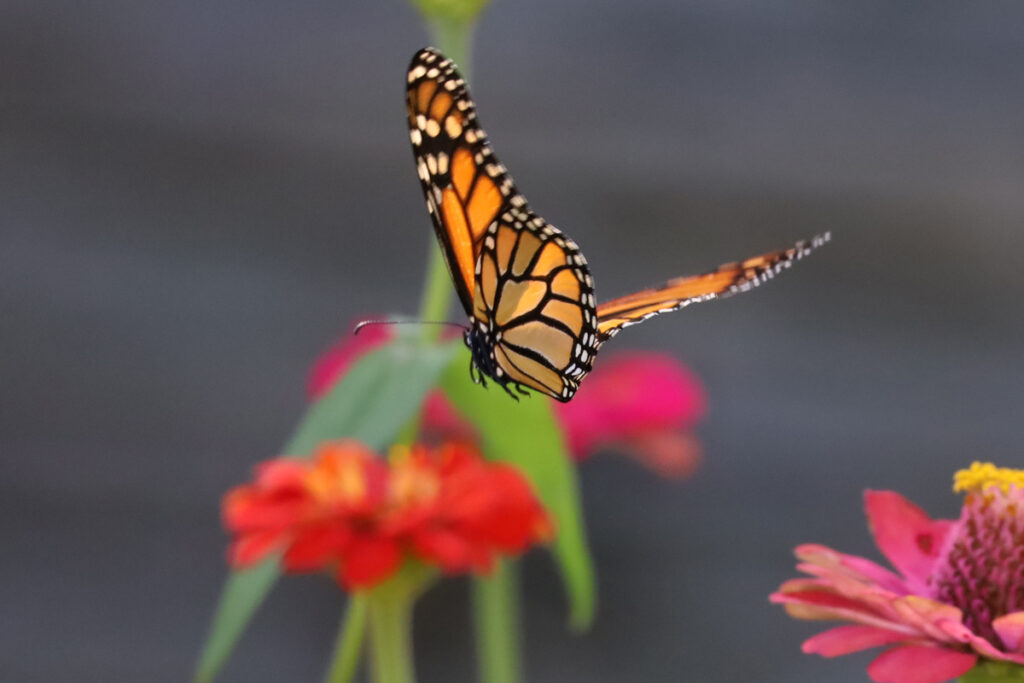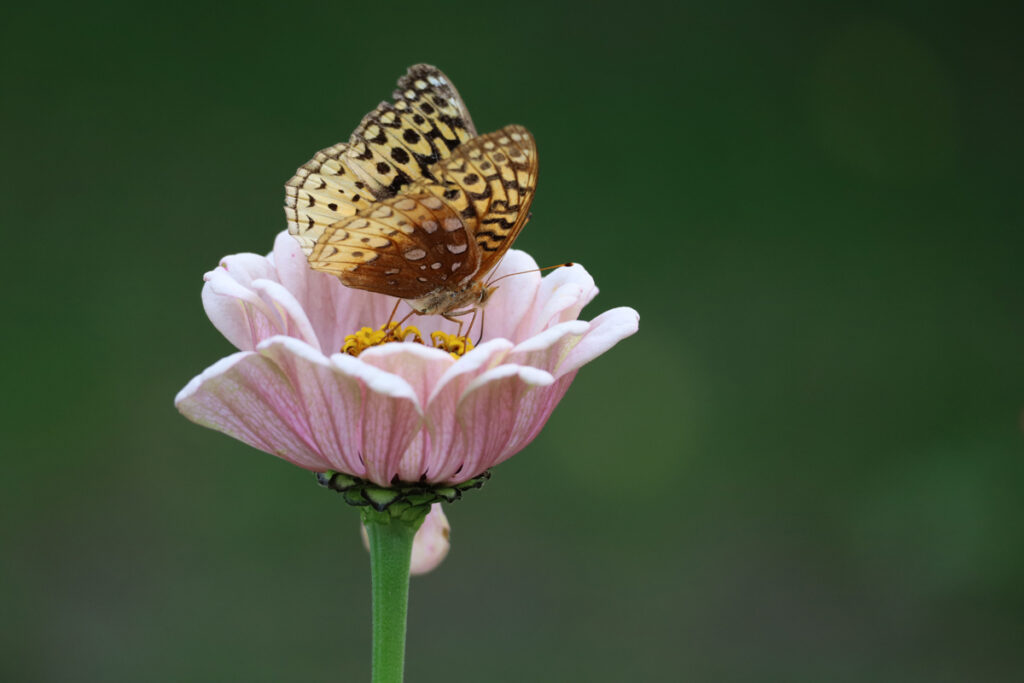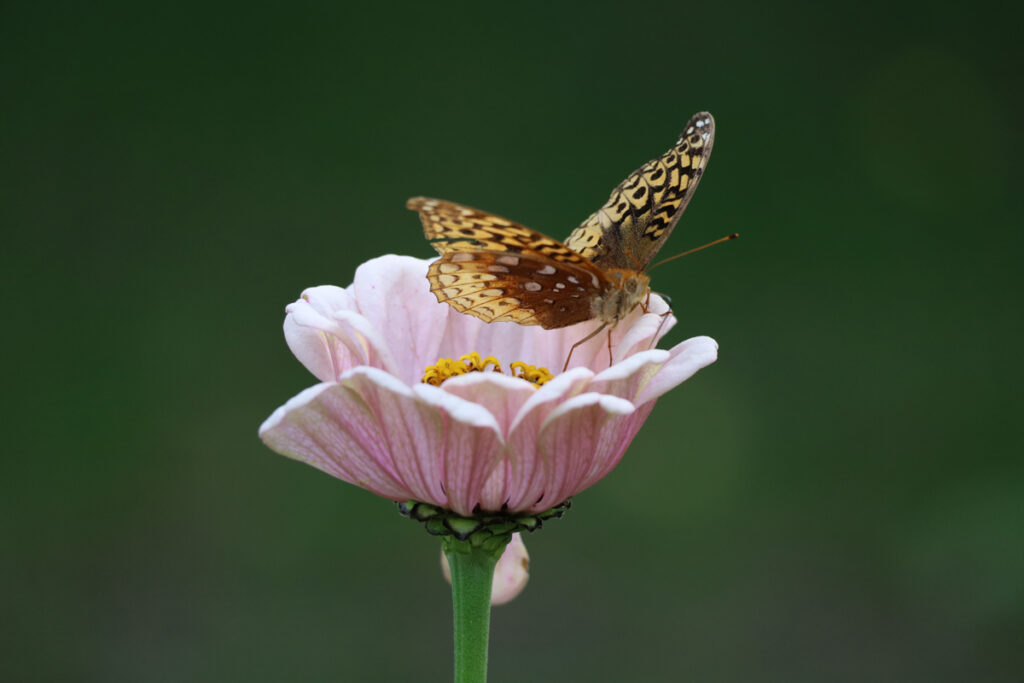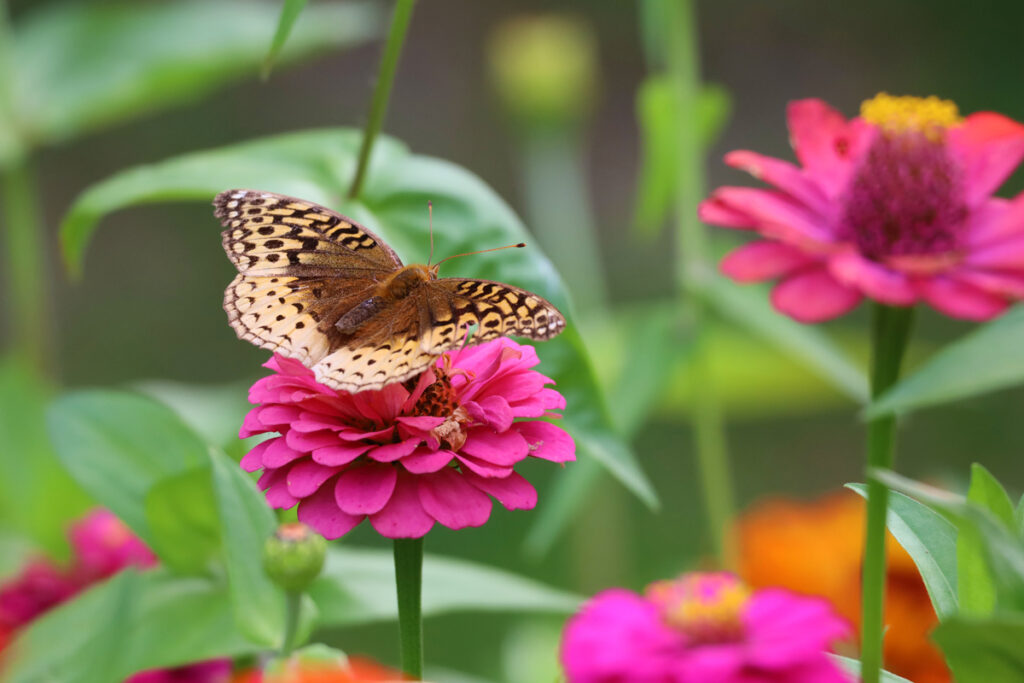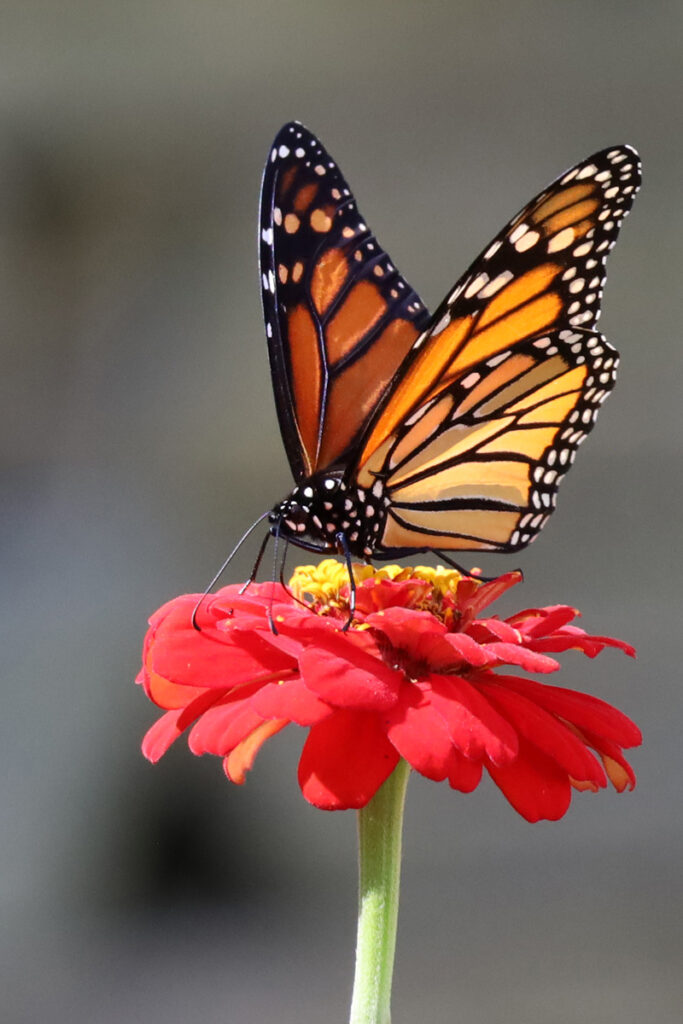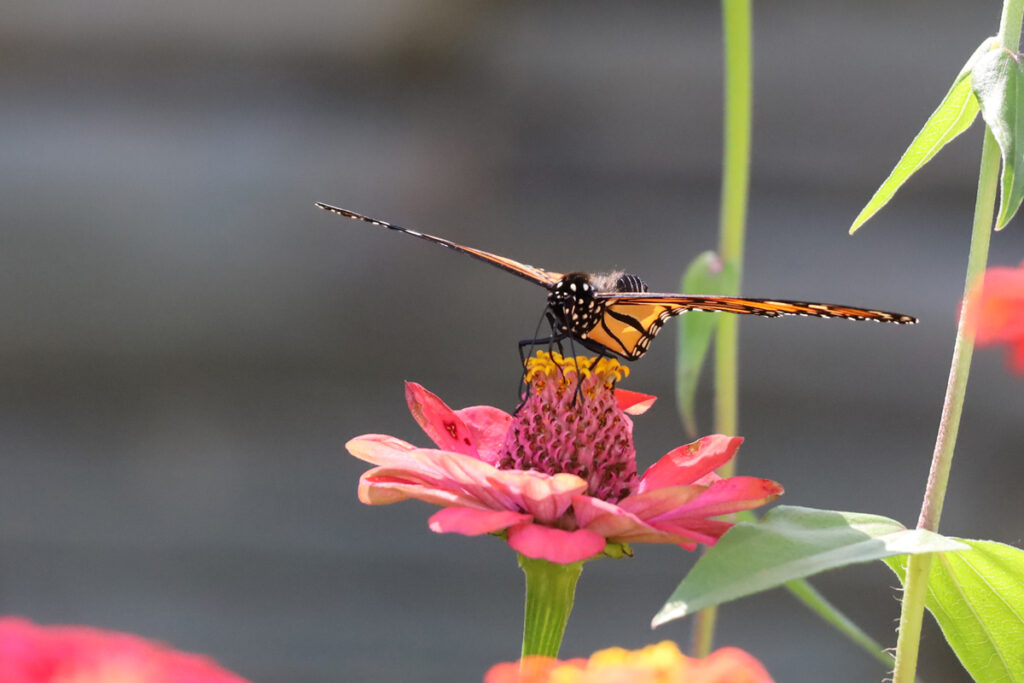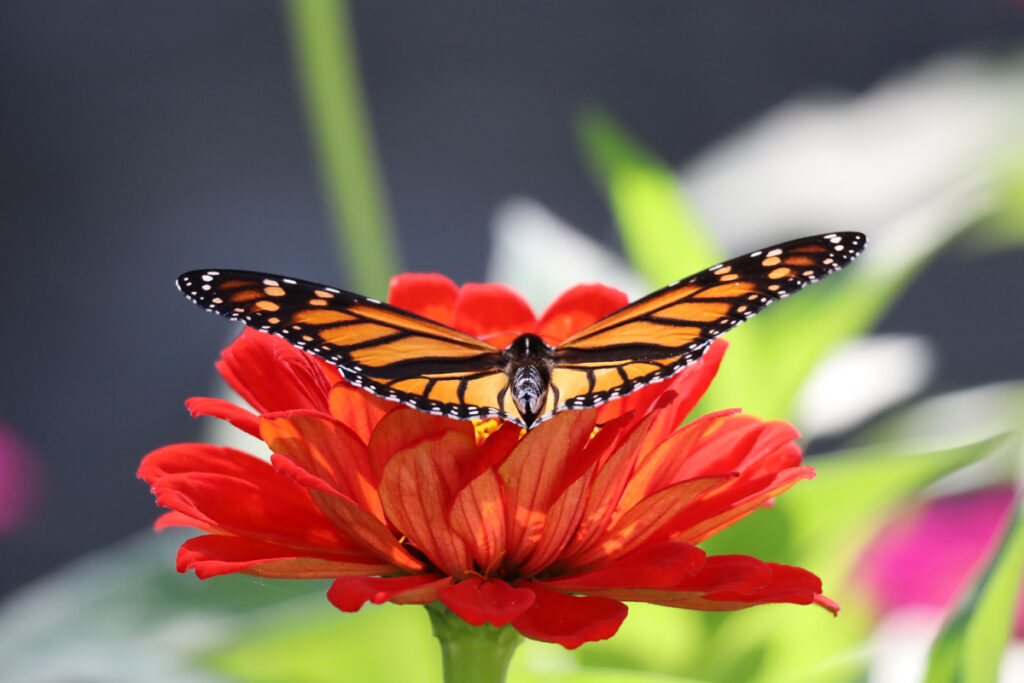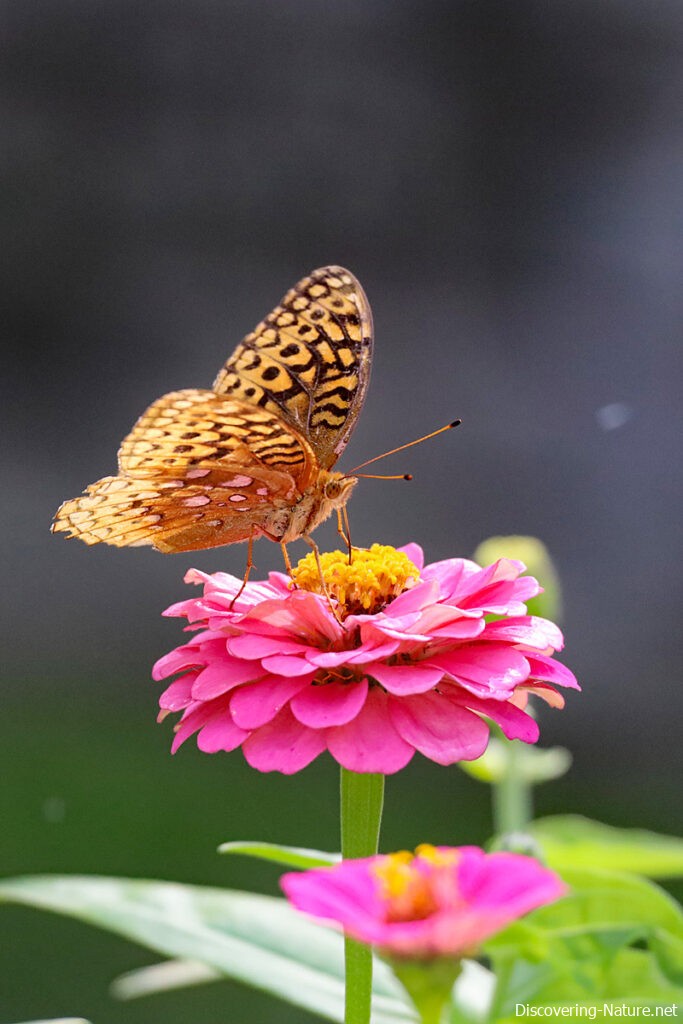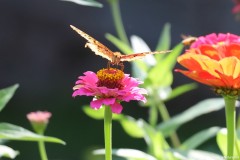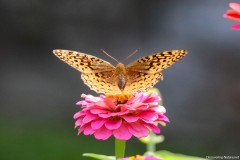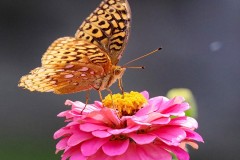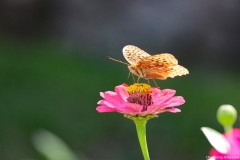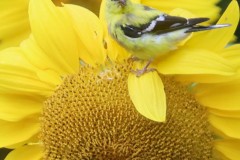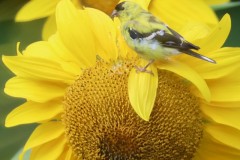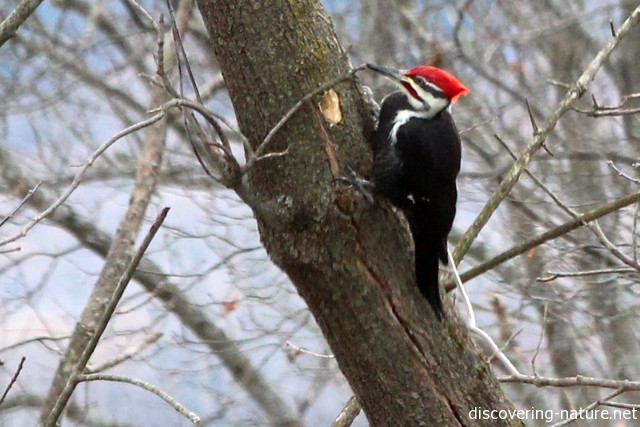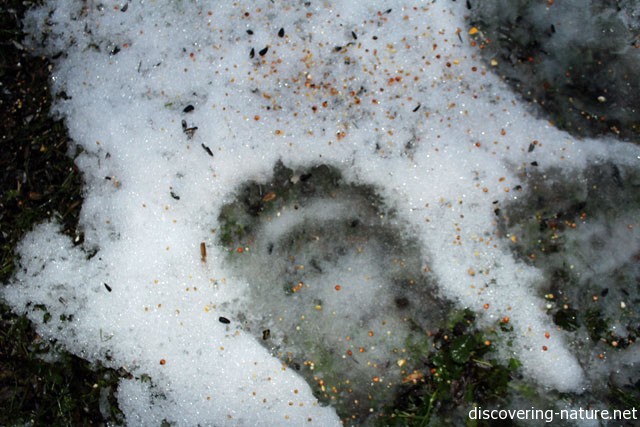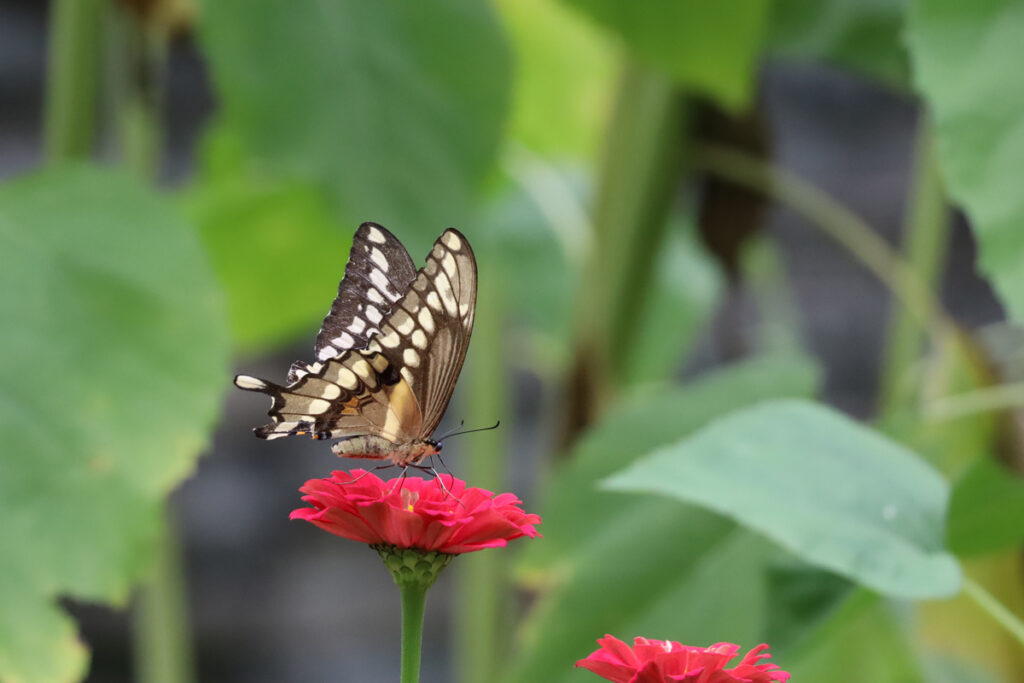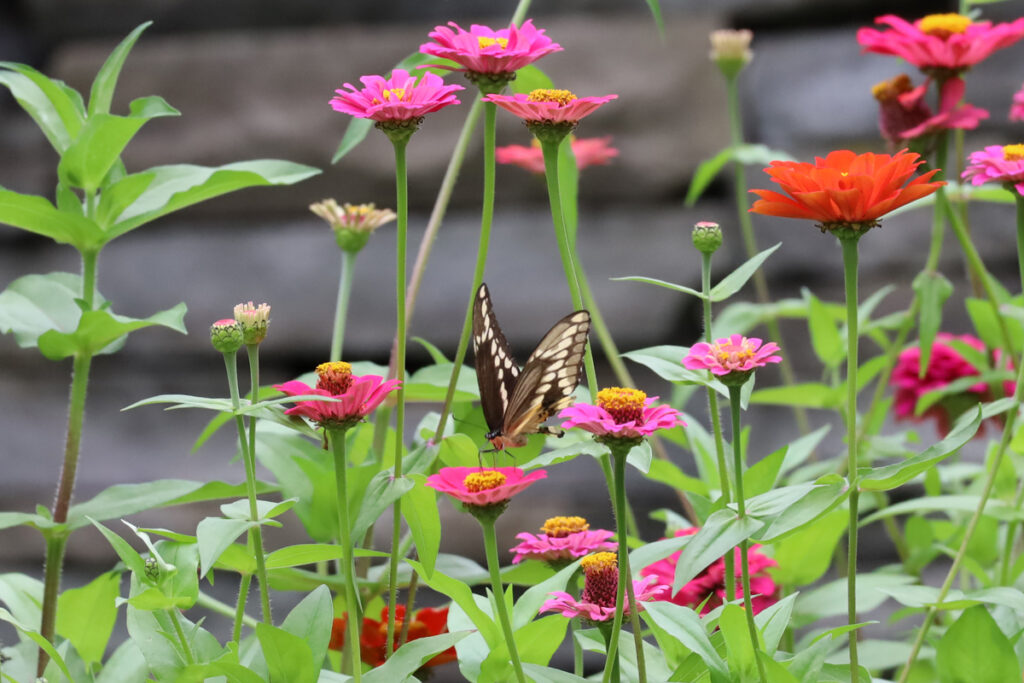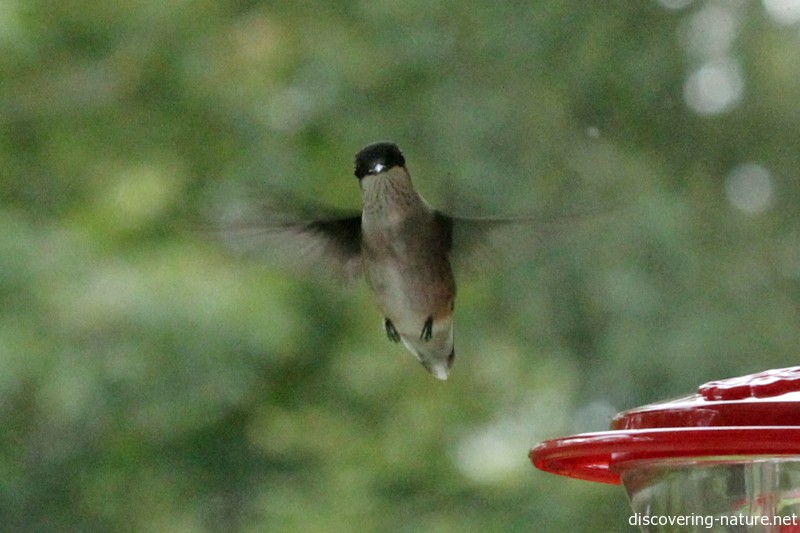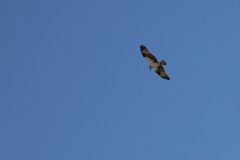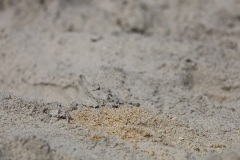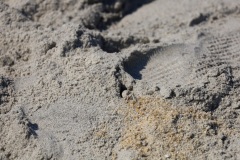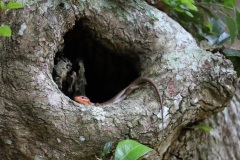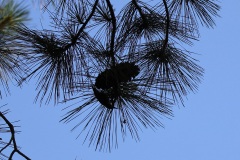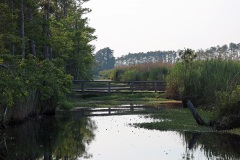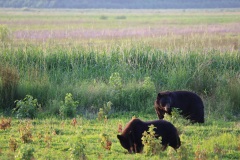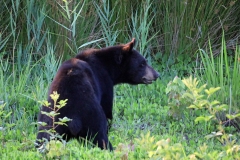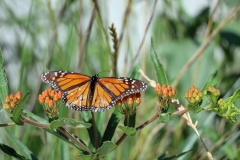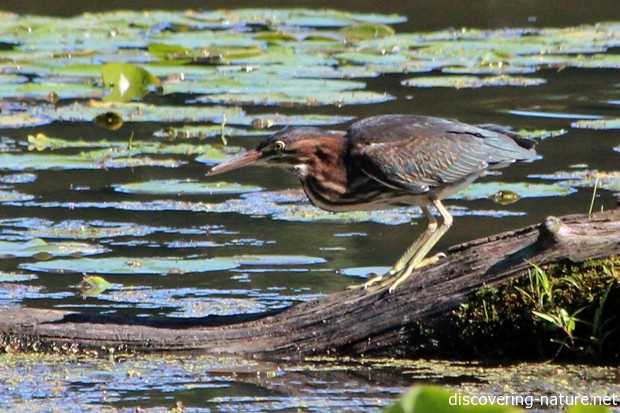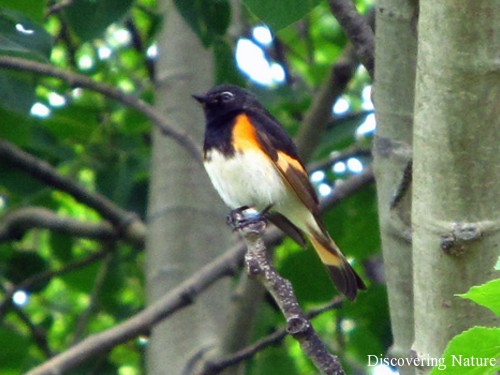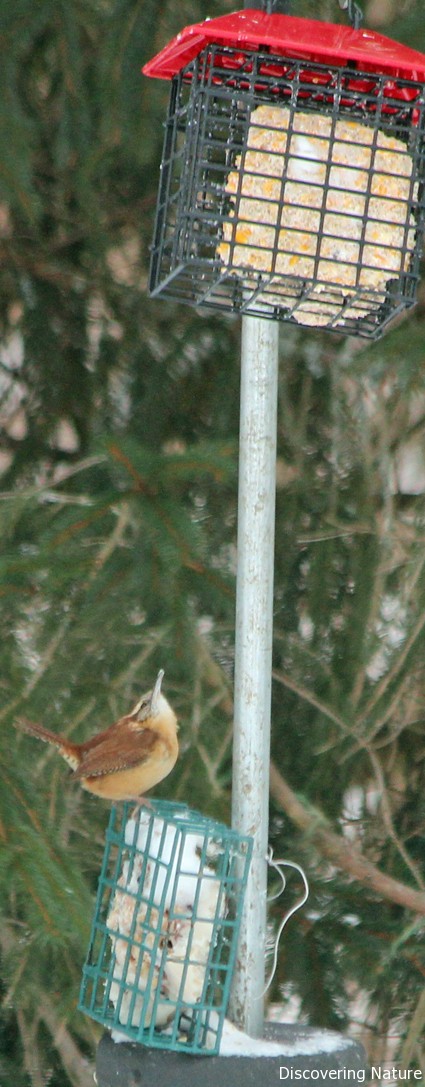Butterflies & Moths
-
Why I leave the zinnias
These flowers are past their prime, but I leave them for the various passersby that might benefit from them: bees, goldfinches, passing hummingbirds, and butterflies. Today I saw a monarch battling the warm breezes to feast on them, and since it’s one of a precious few I’ve seen this summer, I wanted to take some pictures.
In August and early September, I searched several times for some caterpillars to see through the process of metamorphosis, but I didn’t find a single one. Monarchs aren’t doing well these days.
All the more reason to stop and admire while we can.
-
Field Notes: Tiger Swallowtail
Comstock’s memory of a black swallowtail’s hatching affirms that watching a caterpillar’s transformation into a butterfly can be one of the most captivating and memorable experiences a child has.
What struck me first about the tiger swallowtail I watched in the garden was its fearlessness. It was no more concerned to be fluttering around a giant than if I were another flower. My phone was sufficient to capture some pictures.
The second thing I noticed was its broken tail. It’s very unusual to find a perfect butterfly! They seem fragile, yet sometimes they can sustain much more damage than this one had and still last. I wonder how the broken tail happened.
The Handbook of Nature Study didn’t have a section devoted to the tiger swallowtail, but it did have a photo of one in the section on the black swallowtail. Comstock is a wonderfully descriptive writer, and it was fun to read her account of two caterpillars meeting on a caraway stem. Each of them
drew back the head and butted each other like billy goats, whack! whack! Then both turned laboriously around and hurried off in a panic.
But I had to go to this butterfly identification site to learn that
- Female swallowtails lay their green eggs on plants in Magnolia and rose families;
- Males can be seen sometimes “puddling” — drinking from puddles together in damp places, and ingesting sodium ions that help them live longer;
- While the young caterpillars resemble brown and white bird droppings, older ones are a magnificent green with false eyespots that give them a protective resemblance to a snake head; and
- When poked, they project a pair of bright orange glands and secrete a stinky substance that can be wiped on the offending animal
All of that is pretty amazing! Caterpillars and butterflies are some of the best subjects for triggering children’s interest and sense of investment in the natural world because they’re easily seen and approachable. I’ve been an admirer and protector of monarch butterflies since we watched a caterpillar undergo its metamorphosis in kindergarten, but clearly there are other species worth being on the lookout for!
Have you seen or learned about something outdoors this week? Feel free to share it in the comments!
-
A first
We found two caterpillars quite late this year, so we brought them home. This one is Jester, who emerged in the wee hours of September 26. As a caterpillar, Jester was quite plump, and she trudged around the aquarium for a long time before finally forming a chrysalis on a milkweed leaf instead of on the aquarium lid. We taped the leaf up after it dried out and were relieved that the butterfly got off to a good start on a warm day.
The other was a noticeably small caterpillar we dubbed Maverick. Maverick was on a milkweed plant with two spider sacs and a large spider, so by bringing him home we thought we increased his chances. But he formed a chrysalis earlier than expected, while he was still small, and the chrysalis was only about 2/3 the size of a typical one.
It seemed to develop normally, and the butterfly seemed fully developed, but it never emerged. This is a first, and it was a sad way to end the season. The metamorphosis is such an amazing process, and a good metaphor for change and growth. This one was essentially stillborn — seemingly perfect, yet the process didn’t complete.
My daughter helped me remove it from the aquarium lid, and we hung it, by a thread tied around the little black hanger on top, from a bush outside. I couldn’t throw it out. “It would be a great place to emerge,” she remarked. Indeed it would. If only.
-
Progress Report
We’ve found just 4 monarch caterpillars this year. Two have successfully metamorphosed into butterflies; two are still chrysalises in our aquarium.
Here are some glimpses of the process.
Emerging Monarch
Prepping for Takeoff
The Great Outdoors
-
Monarch Season
We’re going to look for some monarchs to see through the caterpillar –> chrysalis –> butterfly cycle again this year. I’ve seen several articles recently about the butterflies being classed as officially endangered. It’s been a number of years since I did this, and I’d like to help make sure at least a few make it through the earthbound phase of their lives.
This video is from 2012. Before that year, when my daughters and I were immersed in nature study, I assumed caterpillars always formed the chrysalis from outside; in truth it’s a much more uncomfortable looking process of enduring its emergence from within. It’s a good metaphor for other kinds of important change — and one I hope to be able to observe again this year. Maybe I can make another video… though I treasure this one, with its shifting reflections of young faces in the aquarium glass.
Music: Liz Story, “Welcome Home”
-
Great Spangled Fritillary
-
Monarch
-
Garden Sightings
-
Giant Swallowtail
These are, I’ve read, the largest butterflies in North America. It takes around 7 weeks to move through egg, caterpillar, and chrysalis stages. The culminating masterpiece, a gorgeous adult butterfly, only lives 6-14 days.
Looking at the torn wings of this one feeding in my zinnias, I sure wish they could regenerate and last longer.
-
Outer Banks in June
I thought I’d posted these earlier in the summer. Better late than never! These are a few select pictures of a great experience at the beach.
To scroll through the photos manually, click on a photo and move forward or back in the sequence using the arrows.

